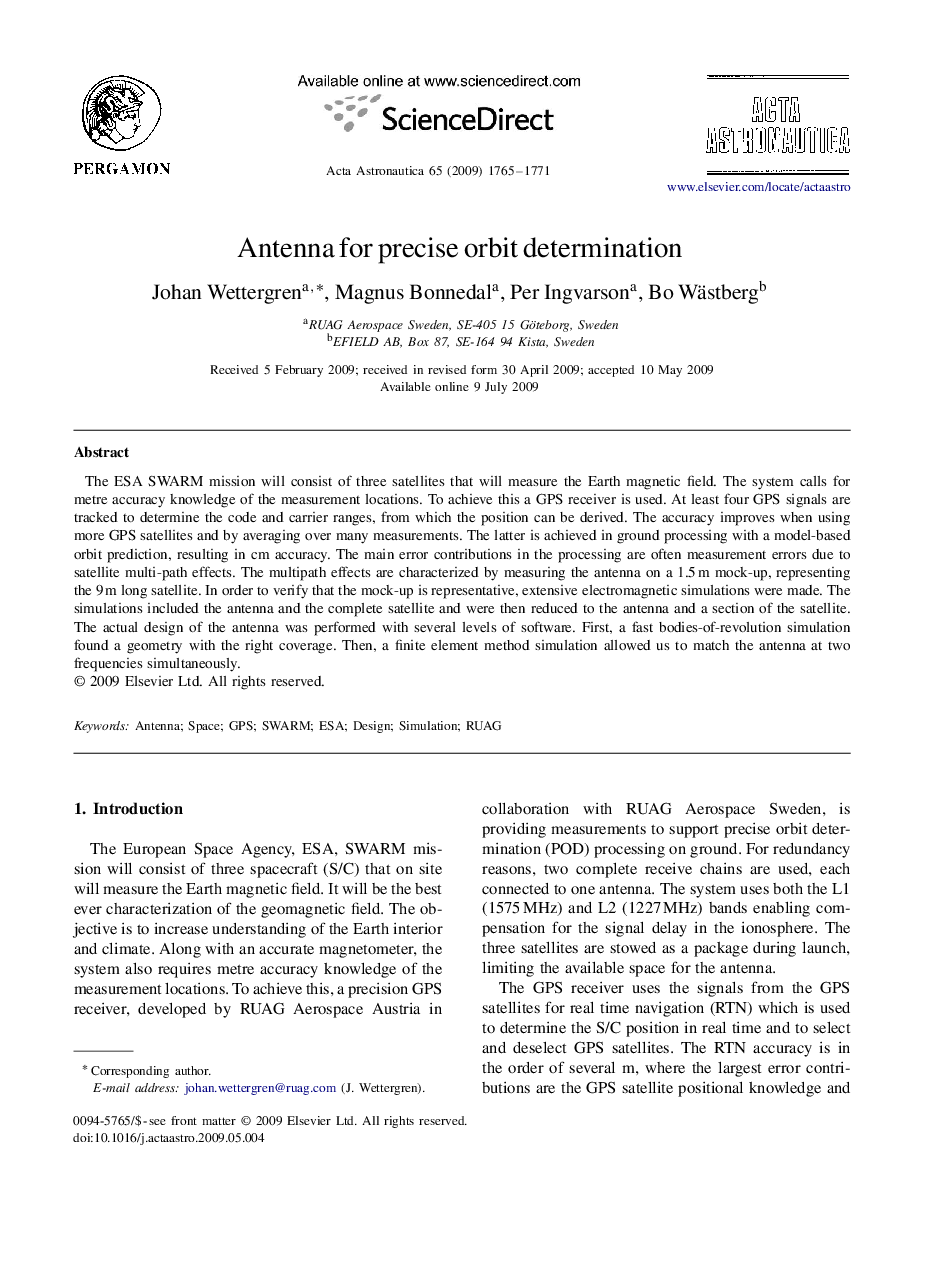| Article ID | Journal | Published Year | Pages | File Type |
|---|---|---|---|---|
| 1716035 | Acta Astronautica | 2009 | 7 Pages |
Abstract
The ESA SWARM mission will consist of three satellites that will measure the Earth magnetic field. The system calls for metre accuracy knowledge of the measurement locations. To achieve this a GPS receiver is used. At least four GPS signals are tracked to determine the code and carrier ranges, from which the position can be derived. The accuracy improves when using more GPS satellites and by averaging over many measurements. The latter is achieved in ground processing with a model-based orbit prediction, resulting in cm accuracy. The main error contributions in the processing are often measurement errors due to satellite multi-path effects. The multipath effects are characterized by measuring the antenna on a 1.5Â m mock-up, representing the 9Â m long satellite. In order to verify that the mock-up is representative, extensive electromagnetic simulations were made. The simulations included the antenna and the complete satellite and were then reduced to the antenna and a section of the satellite. The actual design of the antenna was performed with several levels of software. First, a fast bodies-of-revolution simulation found a geometry with the right coverage. Then, a finite element method simulation allowed us to match the antenna at two frequencies simultaneously.
Related Topics
Physical Sciences and Engineering
Engineering
Aerospace Engineering
Authors
Johan Wettergren, Magnus Bonnedal, Per Ingvarson, Bo Wästberg,
